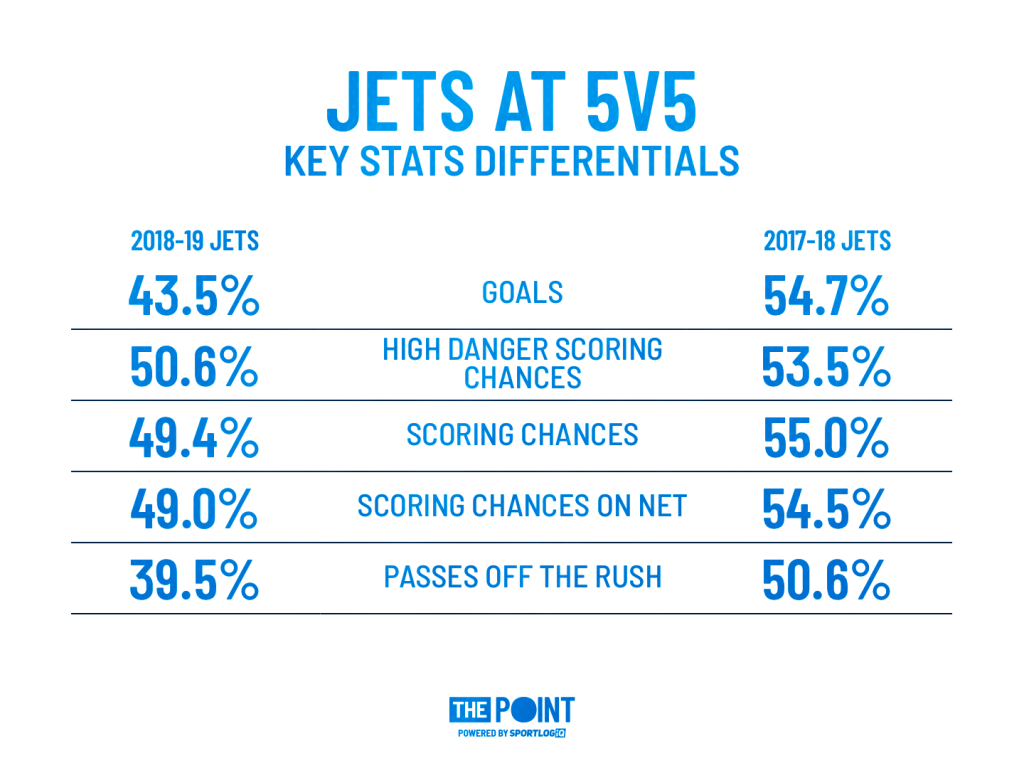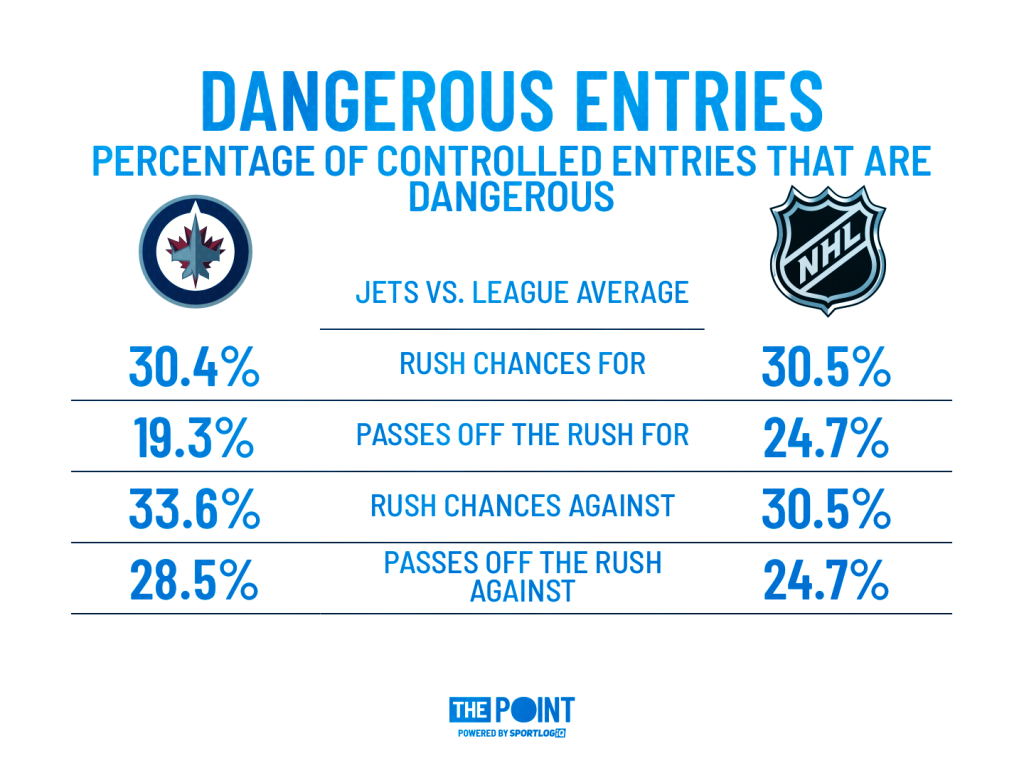Special to the Winnipeg Free Press
We’re about 20 percent of the way through the 2018-19 NHL season, and while the Jets are in a wild-card spot with a winning record, I think everyone who watches them regularly can see that the team hasn’t hit their stride yet this season.
An underwhelming start from several key players both in terms of play and poor puck luck has the Jets looking like a team imitating the dominant cup contender they were last season, but there’s so much talent on the roster that despite a poor start, they’re not really behind where they should be by much, only a handful of points away from second in the division home-ice advantage in the playoffs.
Making bank in the standings even when you’re not playing your best is huge for any team that wants good seeding in the playoffs, but the question remains what has changed in Winnipeg that has caused them to look less than dominant? Let’s compare the team at 5-vs-5 to last season in a variety of categories.

There is no area where the Jets are as dominant in this young season as they were in by the end of last season, which is a little concerning, but what is a bit more concerning is that they’re only outplaying their opponents in two of these categories. Fortunately for the Jets, the high danger chances and control of passes to the slot are arguably the two most important categories for controlling goals, but that hasn’t led them to outscoring their opponents at 5-vs-5 so far this season.
According to various expected goals models, the Jets have been fairly unlucky in that department based on not only their play but also the shooting talent available on the roster. Patrik Laine, for example, has zero 5-vs-5 goals despite 13 shots on net from the slot and 14 from the perimeter, when based on his expected shooting percentage he should have about four on those shots.
Disregarding the actual goal differential due to poor shooting luck, in most of the categories the Jets are close to even, or at least close enough that after 15 games you shouldn’t worry, but the biggest hits have come in an area they were already weak in.
In a league that is consistently getting faster, the Jets are a bit of an outlier because they’re not a great rush team. They have players who are excellent off the rush, namely Nikolaj Ehlers who is a top-five player in the league in that area, but as a team, they’re not as adept as most at creating chances off the rush or defending off the rush.
Opponents attempt to enter the Jets’ zone with possession 40.7 times per 60 minutes at 5-vs-5, which is very close to the league average, but while the average team denies 46.5 percent of those attempted zone entries, the Jets have denied only 42.8 percent, the fourth-worst mark in the league. That leaves the Jets defending attacks off the rush a lot more often than they want to, and they don’t happen to be very good at it either.

Examining the number of controlled entries the Jets give up gives us part of the picture, but the details are even more important. Across the league, every team gives up lots of entries and generates a bunch of their own, but the Jets are fairly poor at both creating offence off the rush and stopping it. The Jets get a scoring chance on 30.4 percent of their entries, which is extremely close to the league average of 30.5 percent, but they complete a pass on only 19.3 percent of their entries, where the league average is 24.7 percent, a huge gap.
Defensively, things look worse, where the Jets give up a scoring chance on 33.6 percent of the entries they allow, and their opponents complete a pass on 28.5 percent of those entries.
Combine these two areas and you get a situation where the Jets’ are allowing far more dangerous chances off the rush than their opponents, and the entries they do get for themselves are far less dangerous, that’s a good way to get outscored.
Off the cycle and off the forecheck, you’d be hard pressed to find a more successful team than the Jets over the last couple of seasons, but being porous off the rush leaves them particularly vulnerable to comebacks against inferior teams who have some speed, which is something the Jets are going to have to game plan for.
One issue that could be addressed in-season is the acquisition of a strong neutral zone defenseman. It doesn’t need to be a star player, and in fact, I think the loss of Tobias Enstrom is the biggest factor in why the Jets look so exploitable in this area: he was an excellent defensive defenseman who wasn’t a star.
The qualities the Jets will be looking for are simply a defenceman who can skate with opposing forwards, has good gap control, a good stick, and isn’t afraid to challenge at the blue line.
Unless things really start to go off the rails this isn’t a rush, but around trade deadline day, if the Jets can’t find a solution internally, they’ll need to look to the trade market to shore up this area. Then again, maybe Paul Maurice and his staff can work some coaching magic.
(Photo by Lance Thomson/NHLI via Getty Images)


